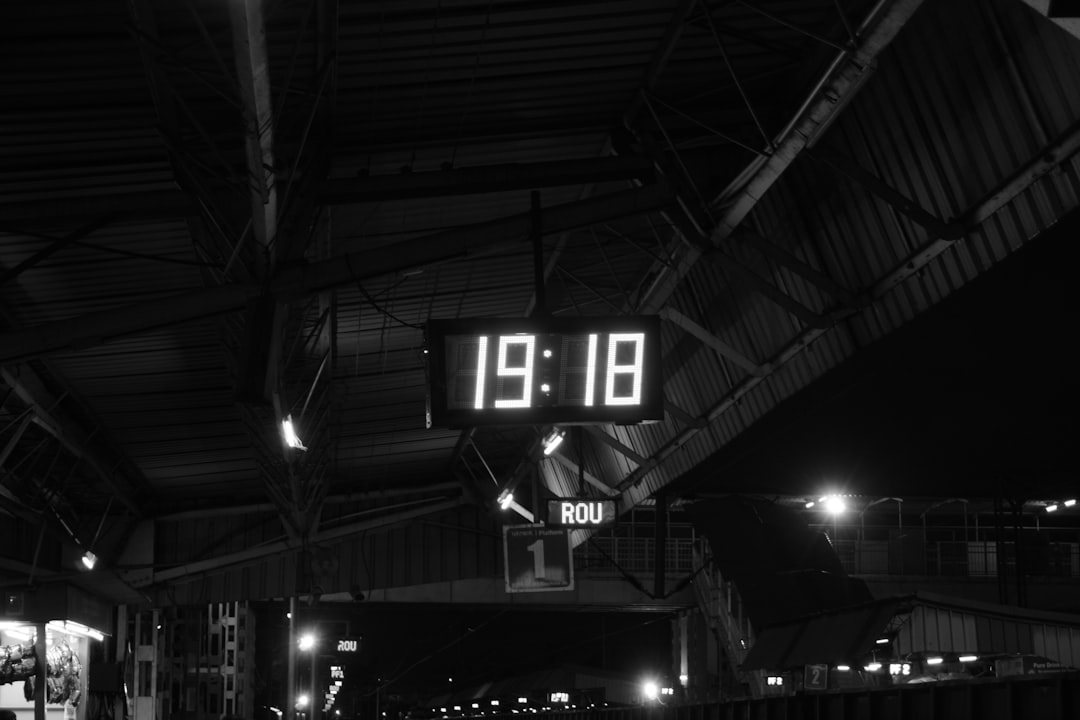

Engage prospects with a scan and streamline customer engagement with FREE QR code marketing tools by Sona – no strings attached!
Create a Free QR CodeFree consultation

No commitment

Engage prospects with a scan and streamline customer engagement with FREE QR code marketing tools by Sona – no strings attached!
Create a Free QR CodeFree consultation

No commitment
The rapid shift to digital workforce management has brought both opportunities and challenges for time and attendance system providers. Many providers struggle to capture the full picture of employee participation, often missing high-value workforce engagement simply because interactions were not tracked or properly attributed. This can lead to lost opportunities for both employee retention and operational insight, especially as businesses strive to improve workforce productivity and ensure accurate attendance tracking.
Manual processes and static systems continue to frustrate HR teams, causing gaps in employee records and incomplete data that hinder compliance and smart decision-making. In an environment where efficiency, employee experience, and data integrity are critical, innovative strategies for engagement and data capture are essential.
Incorporating QR codes into time and attendance processes addresses these challenges, allowing providers to streamline check-ins, simplify onboarding, and create seamless connections between physical workplaces and digital records. By enabling secure, contactless, and app-free interactions, QR codes reduce friction for both staff and administrators, accelerating adoption and surfacing otherwise hidden engagement data.

The challenge of missing or incomplete check-in data often frustrates both administrators and HR leaders, leading to disengagement and unnecessary churn. QR codes create direct pathways from physical check-ins to cloud-based time and attendance systems, removing outdated manual processes and providing seamless, measurable connections. For providers concerned about losing high-value employees due to poor user experience or missed engagement signals, QR codes offer a solution that ensures every interaction counts.
To move from analog friction to digital ease, start by mapping the moments where employees currently face delays or ambiguity: manual punch cards, paper timesheets, crowded kiosks, and static sign-in sheets that do not sync in real time. Replace those touchpoints with scannable codes that launch check-in flows, surface personalized instructions, and log attendance automatically. Each scan becomes a secure, trackable action that updates core systems, supports compliance, and improves the user experience.
With advanced QR platforms such as Sona QR, scans can automatically update core systems and enrich account profiles. Data routing and identity resolution eliminate silos, giving providers and HR leaders a consolidated, real-time view of attendance and engagement that supports better planning and better employee experiences.

For many providers, a common pain point is the lack of visibility into who is actually present, especially when relying on generic sign-in sheets or hardware that cannot capture real-time engagement. This anonymity creates blind spots that lead to missed retention opportunities and compliance risks. QR codes solve these challenges by bridging the gap between physical attendance and digital records with minimal friction. For connecting offline interactions to digital systems, see Sona’s blog post on offline attribution.
Speed and simplicity are central. Workers can scan a code and log attendance in seconds without being forced to download an app or wait in line at a fixed terminal. Administrators gain immediate insight into shifts, overtime, and absences, while the system records source, location, and time for audit readiness. Because the destination behind a QR code can be changed at any time, providers can rapidly update workflows as policies evolve, avoiding reprints or hardware swaps.
These benefits are particularly evident in scenarios such as shift changes, training sessions, visitor onboarding, and secure area access. In each case, timely, accurate, and traceable attendance improves productivity, enhances employee experience, and protects the business through solid audit trails.
Providers frequently miss upsell or cross-sell opportunities when their data is fragmented across static sign-in sheets, badge swipes, or incomplete digital logs. Choosing the right QR code format can unify these touchpoints and make every interaction trackable and useful.
Focus on formats that align with core workflows. Attendance, scheduling, leave management, and training are perfect candidates for web-based flows and smart forms that load instantly and capture the right data. In environments that require quick support, resource pages and contextual help are ideal for lifting adoption and reducing support tickets.
Dynamic QR codes are especially useful where content changes regularly or measurement is a priority. They allow you to update destinations and segment audiences without reprinting. With Sona QR, administrators can manage formats, destinations, and UTM parameters centrally, ensuring analytics are consistent and actionable across campaigns.

Time and attendance providers often struggle to reach distributed or hard-to-engage segments such as mobile field workers, contractors, or flex staff. QR code check-in systems make it easy to place a digital entry point directly where work happens, closing gaps in adoption and data capture that slow retention and expansion.
Map the physical journey of your users. Workers pass through entrances, break rooms, locker areas, tool cribs, training rooms, and job trailers. Each location is a prime surface for scannable interactions that log time, deliver instructions, and invite engagement. By aligning QR placement with real-world movement, you gather full-funnel data and make processes faster for everyone.
Align each deployment with a specific business goal such as reducing late punches, speeding onboarding, or validating time at client sites. When QR usage is explicitly tied to a benefit for the employee and a measurable outcome for HR, adoption moves quickly and stays high.

Incomplete or delayed entry logging, manual errors, and ambiguous attendance signals frustrate HR managers and workforce planners. QR-driven workflows standardize and simplify these interactions while creating clear data trails for analysis and action.
Start with the most universal use cases, then layer more specialized flows as adoption grows. Each scan should collect just enough data to complete the task and support audit requirements, without burdening the user with unnecessary steps.
With each of these use cases, providers capture precise, account-level data, reduce administrative overhead, and create a better experience. As QR interactions rise, retention improves because the system becomes easier to use, more reliable, and more aligned with how people actually work.
Anonymous or fragmented interactions often mean potential champions remain unknown and unassisted. Distinct QR codes for different attendance scenarios turn routine behaviors into signals you can segment and nurture. The result is a living map of who needs help, who is thriving, and where you can expand value.
Start by tagging each QR campaign with clear metadata: location, use case, audience, and time of day. As scans roll in, the platform creates cohorts that mirror your workforce. New hires require guidance and reminders, field teams need location-aware support, and experienced staff respond to efficiency features. Retargeting based on these patterns boosts satisfaction and retention. Sona is an AI-powered marketing platform that unifies attribution with activation; for tactics, see Sona’s Playbook intent-driven retargeting.
In time and attendance specifically, it helps to differentiate audiences such as new hires versus seasoned employees, on-site versus field workers, and hourly versus salaried staff. Tailor messaging to each group: onboarding help for new hires, mobile tips for field teams, and advanced reporting insights for managers. These distinctions turn scan data into a value engine rather than a static log.
Disconnected campaigns and inconsistent messaging leave employees and stakeholders confused or disengaged. QR codes act as a connective tissue across offline and online touchpoints, ensuring that information, support, and action are always one scan away.
For providers, this integration also has a commercial upside. Every scannable asset becomes a diagnostic tool that reveals what works and where to invest. By assigning unique codes to each channel and placement, you build an attribution model for operational content the same way marketing teams track promotions.
Consistent QR use ensures that each channel supports the others. It enables attribution for operational content, reduces message fragmentation, and aligns the employee journey with a simple, repeatable pattern: see code, scan, act. With a platform like Sona QR, you manage all codes centrally, monitor performance, and sync data to your CRM and HR tools for unified reporting.
Launching a QR initiative without a clear plan often produces partial adoption and limited value. A thoughtful, staged rollout ensures the right use cases, measurable goals, and reliable execution. Treat each step as a short sprint that builds momentum and trust with users.
Begin with one or two critical workflows such as check-in and training attendance, then layer more complex flows such as leave requests or shift swaps. Communicate early and often about what employees gain: faster check-ins, fewer errors, quicker corrections, and reliable pay.
Identify the retention or operational challenge that most needs attention. Common examples include daily sign-in friction, inconsistent field time capture, event engagement, or overtime tracking. Select a use case with visible pain, clear value, and a small number of steps to complete so users see the benefit immediately.
Determine whether you need the flexibility and analytics of dynamic QR codes or the simplicity of static codes. For time and attendance, dynamic codes are usually the best fit because destinations evolve and measurement is essential.
Good design increases scans. Clear instructions, strong contrast, and appropriate size for viewing distance are critical. Reinforce brand trust so employees know the code is official and safe to use.
Place codes where employees naturally pass or wait, and where scanning is comfortable. Make sure the physical context signals legitimacy and provides enough space to scan safely.
Measurement closes the loop. Monitor performance, identify friction, and iterate placements and messages to raise scan rates and completion rates.
Iterative improvement turns QR deployments into a compounding asset. Each cycle removes friction, increases adoption, and strengthens your reputation with users who appreciate a system that just works.

Historically, generic attendance tracking left providers with incomplete data that made it difficult to draw actionable insights or link engagement to business outcomes. Today, every QR scan can be captured with rich context such as time, location, and device. That context helps you answer not only who scanned but also what happened next.
Analytics should extend beyond raw scan counts. Correlate scan activity with improvements in payroll accuracy, reductions in supervisor interventions, and faster training completion. Tie operational wins to retention and upsell signals, such as increased adoption of mobile check-in or growing interest in advanced reporting features. For strategy on tying scans to business outcomes, see Sona’s blog on revenue attribution.
This approach transforms fragmented attendance touchpoints into a real-time feedback loop. When providers can connect scans to outcomes, they build stronger business cases for feature adoption, streamline operations, and demonstrate tangible value to customers.
Scaling QR workflows does not have to be complex. Start with a few pragmatic best practices, educate teams on why scanning matters, and automate follow-up so that each interaction accelerates the journey. The goal is to make scanning the easiest way to get help, get credit, or get paid correctly.
Avoid common pitfalls such as small codes in low-light areas, vague calls to action, or destinations that require logins without clear guidance. When employees understand the benefit and the path is simple, engagement follows.
As adoption grows, consider creative deployments such as pocket cards for field crews that double as emergency contacts, or QR stickers on equipment sign-out sheets that log time spent by task. These small touchpoints compound into a more accurate, more trusted system. For field operations, explore a QR inspection workflow.
For time and attendance system providers, QR codes are more than a technology upgrade. They represent a strategic shift toward a connected, insight-driven approach to workforce management. By addressing long-standing pain points like incomplete account data, missed engagement signals, and disconnected campaigns, QR-powered solutions turn every physical interaction into a digital asset that advances the employee journey.
This strategy fosters immediate engagement, error-free attendance, and actionable analytics. HR leaders gain real-time visibility and simpler compliance, while employees enjoy faster check-ins, fewer payroll issues, and clearer guidance. With next-generation QR technology woven thoughtfully throughout operations, time and attendance solutions deliver measurable business impact and stronger retention, transforming every scan into progress toward operational excellence and long-term growth.
QR codes have revolutionized the time and attendance system providers industry by transforming employee check-ins from manual, error-prone tasks into seamless, trackable interactions. Beyond simplifying attendance tracking, QR codes enhance workforce management by enabling real-time data capture, reducing fraud, and improving overall operational efficiency. Imagine instantly verifying employee presence while gaining actionable insights into attendance patterns—all without cumbersome hardware or paperwork.
With Sona QR, you can create dynamic, trackable QR codes that update instantly without the need for reprinting, ensuring your system evolves alongside your workforce needs. Connect every scan to actionable data, streamline audits, and boost employee accountability with ease. Start for free with Sona QR today and experience how effortless attendance management can elevate retention and operational success.
Employees scan QR codes located at key points to securely check in and out, with each scan linked to their employee record and updating cloud-based time and attendance systems in real time.
They streamline check-ins, reduce manual errors, improve payroll accuracy, enhance compliance, enable contactless and app-free interactions, and provide real-time insights into workforce engagement.
By deploying scannable QR codes at job sites and client locations, remote and field workers can verify presence and log attendance without specialized hardware, closing visibility gaps and ensuring accurate records.
Look for dynamic QR code support, seamless integration with HR systems, real-time data capture, secure authentication methods, customizable workflows, robust analytics, and easy deployment across multiple channels.
By capturing precise, real-time attendance data linked to employee profiles, the system reduces manual errors, enables timely corrections, supports compliance reporting, and shortens dispute cycles for payroll.
Use Sona QR's trackable codes to improve customer acquisition and engagement today.
Create Your FREE Trackable QR Code in SecondsJoin results-focused teams combining Sona Platform automation with advanced Google Ads strategies to scale lead generation

Connect your existing CRM

Free Account Enrichment

No setup fees
No commitment required

Free consultation

Get a custom Google Ads roadmap for your business






Launch campaigns that generate qualified leads in 30 days or less.
